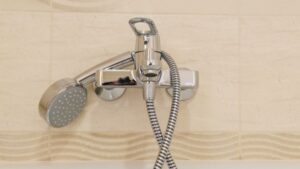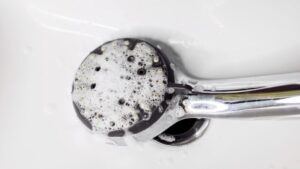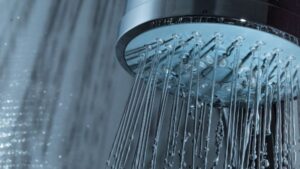When most people think of bidets, they picture a strange, separate fixture in European bathrooms that requires gymnastic maneuvers to use properly. This common misconception has prevented many from experiencing the cleanliness, comfort, and environmental benefits these simple devices offer.
Contrary to popular belief, modern bidets are easy to install, affordable, and significantly more hygienic than toilet paper alone. They come in various forms, from simple attachments that connect to existing toilets to advanced models with heated seats and adjustable water pressure.
In this post, we will discuss the 12 misconceptions about bidets.

Common Misconceptions About Bidets
Despite growing in popularity, bidets remain surrounded by several persistent myths that often prevent people from experiencing their benefits. Many of these misconceptions stem from unfamiliarity with how modern bidets actually work.
#1 Bidets are Unsanitary
Contrary to popular belief, bidets are actually more hygienic than using toilet paper alone. Modern bidets use clean, fresh water to wash the user, not recycled or used water.
The nozzles on electric bidets are self-cleaning, with many models featuring antimicrobial materials to prevent bacterial growth. These nozzles remain protected when not in use, emerging only during the washing cycle.
Studies have shown that washing with water removes more bacteria than wiping with dry paper, which can spread bacteria rather than remove it completely. This is why we wash our hands with water instead of just wiping them with paper.
Healthcare professionals often recommend bidets for patients with certain conditions like hemorrhoids or mobility issues, specifically because of their superior hygiene benefits.
#2 Bidets Replace Toilet Paper Completely
Bidets significantly reduce toilet paper usage but don’t always eliminate it entirely. Most users still use a small amount of toilet paper to dry off or to check for cleanliness.
Some advanced bidet models include warm air dryers, which can further reduce or eliminate the need for toilet paper. These features make bidets more environmentally friendly than relying on toilet paper alone.
The average American uses about 100 rolls of toilet paper annually. Even with partial toilet paper use, bidet owners typically report 75-95% reduction in their toilet paper consumption.
For environmentally conscious consumers, this reduction represents significant savings in resources. A single tree produces about 100 pounds of toilet paper, meaning bidet use can save numerous trees over a lifetime.
#3 Difficult to Install at Home
Modern bidet attachments and seats are designed for easy installation with minimal tools or expertise required. Most models can be installed in under 30 minutes without a plumber.
Basic installation typically involves:
- Turning off the water supply
- Removing the existing toilet seat
- Attaching the bidet seat or attachment
- Connecting to the water supply using the provided T-valve
Non-electric bidet attachments require no electrical connection at all. Electric models generally plug into standard outlets, though some premium models might benefit from professional installation if electrical work is needed.

#4 Bidets are Only for Women
Bidets are beneficial for everyone regardless of gender. The cleansing benefits apply universally to all users seeking improved hygiene.
Men particularly benefit from bidets after bowel movements, as they provide more thorough cleaning than toilet paper. Athletes of all genders appreciate bidets for freshening up after workouts or during hot weather.
Families with children find bidets helpful for teaching proper hygiene habits. Elderly individuals and those with mobility issues benefit from the independence bidets provide, reducing the need for assistance in the bathroom.
Many bidet models feature adjustable settings for water pressure, temperature, and nozzle position, making them customizable for any user’s preferences. Some even offer specialized cleaning modes to address different needs.
#5 Spreading Germs or Bacteria
A common fear is that bidet water might splash bacteria around the bathroom. This concern is largely unfounded in properly designed modern bidets.
Most bidets direct water in a controlled stream that minimizes splashing. The water used in bidets comes from the same clean water supply that feeds your sink, not from the toilet bowl.
Electric bidets have self-cleaning nozzles that rinse before and after each use. Many models also include antimicrobial materials for the nozzles to prevent bacterial growth.
Research has shown that bathrooms with bidets don’t have higher bacterial counts than those without. In fact, by reducing the need to handle toilet paper, bidets can actually decrease hand contamination.
#6 Contamination Concerns
Many worry about nozzles becoming contaminated with waste. Modern bidets are designed to prevent this problem entirely.
Bidet nozzles remain retracted when not in use, protecting them from toilet bowl splashes. They only extend when activated and are positioned to avoid contact with waste.
The angle of the spray is carefully engineered to prevent backflow contamination. Water pressure pushes outward rather than drawing anything back toward the nozzle.
Key protection features in modern bidets:
- Nozzle guards that prevent direct exposure
- Self-cleaning cycles using fresh water
- Positioning that keeps nozzles away from waste
- One-way valves preventing backflow into water lines
These design elements ensure that using a bidet is actually more hygienic than traditional wiping methods. Any theoretical risk is far outweighed by the improved cleanliness bidets provide.
#7 Medical Endorsements of Bidet Use
Many medical professionals actually recommend bidets for patients with certain conditions. Gastroenterologists often suggest bidets for patients with IBS, Crohn’s disease, or chronic constipation.
Bidets receive particular praise from colorectal specialists for patients suffering from:
- Hemorrhoids
- Anal fissures
- Post-surgical recovery
- Chronic constipation
Studies show regular bidet use can reduce irritation and inflammation in sensitive areas. A 2018 medical survey found 86% of responding physicians believed bidets were beneficial for patients with anorectal conditions.
Women’s health specialists sometimes recommend bidets during pregnancy and postpartum recovery. The gentle cleaning helps maintain hygiene when mobility is limited and tissues are sensitive.
#8 Bidets are Expensive
The belief that bidets require a significant financial investment is largely outdated. Basic bidet attachments start at around $30-$50, making them accessible for most budgets. These simple models attach to existing toilets and provide effective cleaning without breaking the bank.
Mid-range options with features like warm water and adjustable pressure typically cost $100-$200. While premium models with heated seats, customizable settings, and air dryers can reach $300-$700, they remain comparable to the cost of a quality standard toilet.
When considering long-term expenses, bidets actually save money. The average household spends approximately $120-$150 annually on toilet paper, which bidets significantly reduce. Most bidet users report 75-80% less toilet paper consumption.
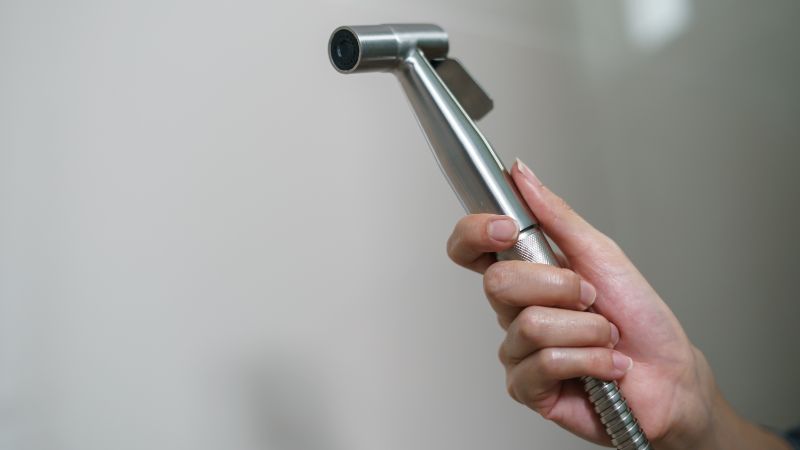
#9 Only Common in Certain Countries
A persistent myth suggests bidets are exclusively European or Japanese fixtures. This misconception ignores their growing global popularity and diverse implementations.
While bidets originated in France during the 1700s, their usage has spread far beyond European borders. South Korea has embraced bidet technology with approximately 65% of households incorporating some form of washing system.
Brazil and Argentina have widespread bidet adoption, with many homes featuring traditional models. The Middle East similarly boasts high usage rates, though often with different designs than European counterparts.
North American adoption has historically lagged behind but is rapidly growing. The 2020 toilet paper shortages prompted a 300% increase in bidet sales across the United States according to industry reports.
#10 Bidets Waste Water
Contrary to popular belief, bidets typically use very little water per use. The average bidet only consumes 1/8 gallon (about 0.5 liters) of water per cleaning session. This amount is significantly less than most people imagine when considering bidet water usage.
Modern electronic bidets are even more efficient, with precise water delivery systems that minimize waste. Some advanced models feature eco-settings that further reduce water consumption without sacrificing cleaning effectiveness.
It’s worth comparing this water usage to the production of toilet paper. Manufacturing just one roll of toilet paper requires approximately 37 gallons (140 liters) of water. This stark difference highlights how the direct water usage of bidets can be misleading when viewed in isolation.
#11 All Bidets Require Electricity
Many people assume all bidets need electrical outlets to function, which isn’t accurate. Non-electric bidets operate using only water pressure from the existing plumbing system. These mechanical models control water flow and temperature through simple valve systems.
Some popular non-electric options include:
- Handheld sprayersthat attach to the toilet
- Bidet attachmentsthat install under existing toilet seats
- Manual bidet seatswith adjustable pressure controls
While electric bidets offer heated seats, warm air dryers, and programmable settings, the non-electric versions provide effective cleaning without increasing your energy bill. These models are particularly valuable in bathrooms without convenient outlets or for those wanting to minimize electricity usage.
#12 Limited Options and Features
Contrary to popular belief, bidets come in a wide variety of styles with numerous customization options. Many consumers mistakenly think bidets only offer basic washing functionality.
Modern bidets include features such as:
- Adjustable water temperaturefrom cool to warm
- Precision nozzle positioningfor personalized cleaning
- Multiple spray patternsincluding oscillating and pulsating options
- Self-cleaning nozzlesthat sanitize before and after each use
Some advanced models even offer night lights, deodorizers, and user presets for multiple household members. Remote controls allow users to easily adjust settings without awkward reaching.
The market now includes options at various price points, from basic $40 attachments to premium models costing over $700. This range ensures bidet technology is accessible regardless of budget constraints.
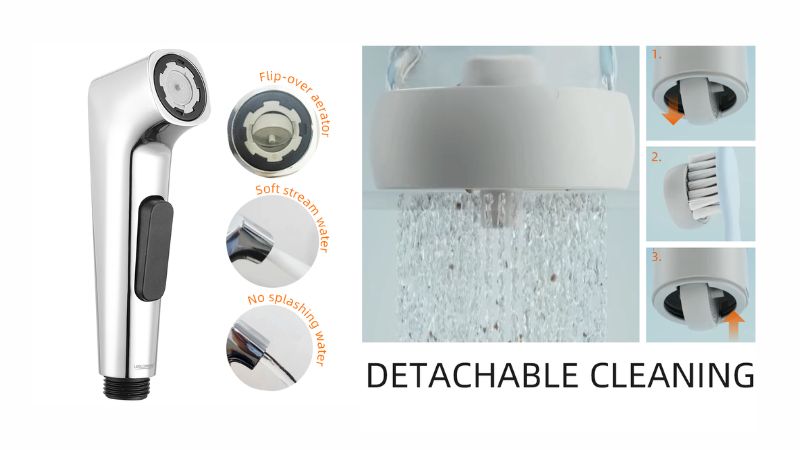
Ready to experience the superior hygiene and comfort of a bidet?
Leelongs offers a diverse range of versatile bidet showers to suit any bathroom. From multi-functional stainless steel handheld sprayers to user-friendly designs, you’ll find options like the New Detachable Washable 2-Function Stainless Steel Bidet Sprayer (SH-5189) or the Premium Stainless Steel Handheld Toilet Bidet Sprayer (SH-5800).
Take the next step towards a cleaner, more sustainable lifestyle. Explore Leelongs’ Bidet Shower collection and Contact Us for pricing.


